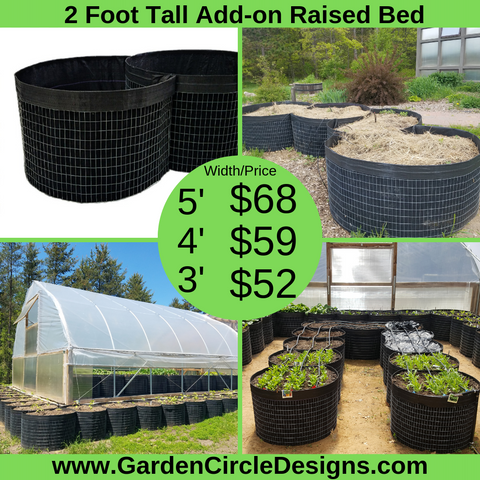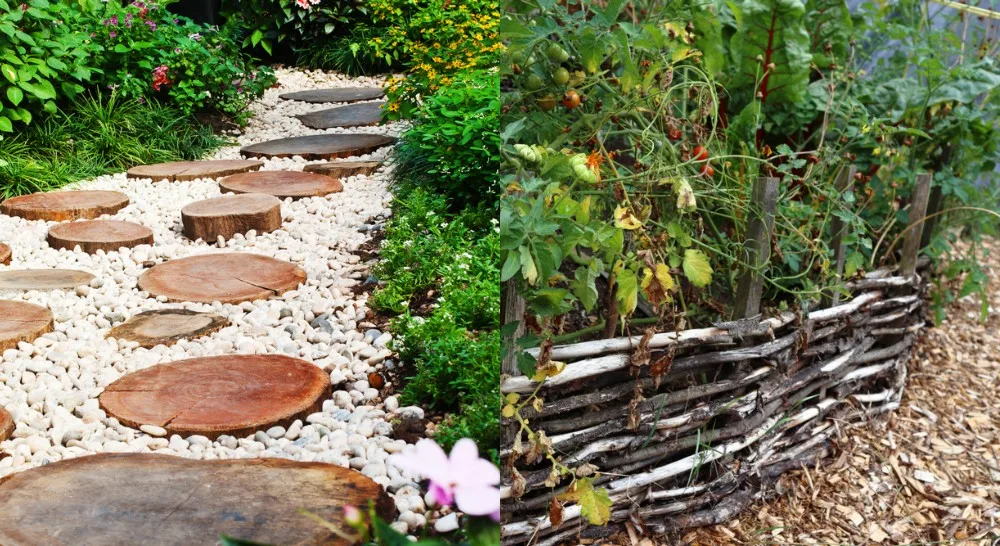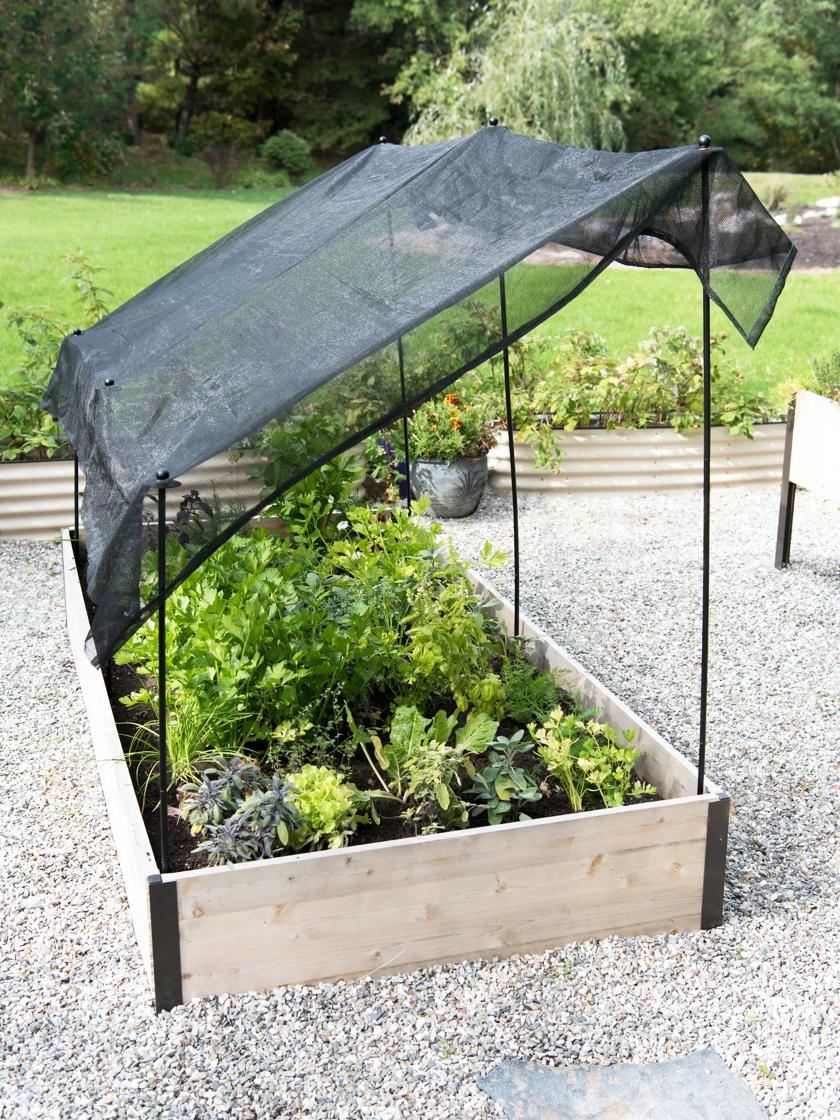The Best Mesh For Garden Beds In
Title: The Best Mesh for Garden Beds in 2023
Introduction:
Garden mesh is a versatile material that can be used to protect your plants from a variety of pests and animals. It can also be used to keep weeds out of your garden beds and to help retain moisture in the soil.
If you're looking for the best mesh for your garden beds, there are a few factors you'll need to consider. The most important factor is the size of the mesh. You'll need to choose a mesh that is small enough to keep out the pests and animals you're trying to protect your plants from, but large enough to allow air and water to circulate freely.
Another important factor to consider is the material the mesh is made of. Some materials, such as polypropylene, are more durable than others. You'll also need to consider the color of the mesh. Black mesh can help to suppress weed growth, while white mesh can reflect sunlight and help to keep your plants cool.
In this blog post, we'll discuss the different types of mesh available for garden beds and help you choose the best mesh for your needs.
Main Content:
There are three main types of mesh that are commonly used for garden beds:
- Plastic mesh: Plastic mesh is the most common type of mesh used for garden beds. It is relatively inexpensive and easy to find. Plastic mesh is available in a variety of sizes and colors.
- Wire mesh: Wire mesh is more durable than plastic mesh, but it is also more expensive. Wire mesh is available in a variety of sizes and shapes.
- Jute mesh: Jute mesh is a natural fiber that is biodegradable. It is not as durable as plastic or wire mesh, but it is a good option for organic gardens.
Here is a table that summarizes the different types of mesh and their pros and cons:
| Type of Mesh | Pros | Cons |
|---|---|---|
| Plastic mesh | Inexpensive, easy to find, available in a variety of sizes and colors | Not as durable as wire or jute mesh, can be susceptible to UV damage |
| Wire mesh | Durable, available in a variety of sizes and shapes | More expensive than plastic mesh, can be sharp and difficult to work with |
| Jute mesh | Biodegradable, natural fiber | Not as durable as plastic or wire mesh, can be difficult to find |
Once you have chosen the type of mesh you want, you need to decide how to install it. There are a few different ways to install mesh in a garden bed.
- The easiest way to install mesh is to simply lay it over the top of your garden bed and secure it in place with stakes or rocks.
- If you want to keep animals out of your garden bed, you can bury the mesh a few inches below the ground.
- If you want to keep weeds out of your garden bed, you can lay the mesh on the ground before you add soil to the bed.
No matter how you choose to install it, mesh can be a valuable tool for protecting your plants and improving the health of your garden bed.
Conclusion:
The best mesh for your garden beds will depend on your specific needs and preferences. If you're looking for an inexpensive and easy-to-find option, plastic mesh is a good choice. If you need a more durable mesh, wire mesh is a better option. And if you're looking for a natural fiber mesh, jute mesh is a good choice.
No matter which type of mesh you choose, make sure to install it properly to ensure that it will provide the best protection for your plants.
Are you looking for mesh for your garden bed? Home Gardening has a wide variety of mesh materials and sizes to choose from, so you can find the perfect one for your needs. Whether you're looking to keep out pests, prevent weeds, or simply keep your soil in place, Home Gardening has the mesh you need.
In addition to a wide selection of mesh materials, Home Gardening also offers free shipping on orders over $50. So why wait? Visit Home Gardening today to learn more about mesh for garden beds and to find the perfect mesh for your needs.
FAQ of mesh for garden bed
- What is mesh for garden bed?
Mesh for garden bed is a type of netting that is used to protect plants from pests and animals. It is typically made of a lightweight material, such as plastic or nylon, and has a small mesh size that prevents pests from getting through. Mesh for garden bed can be used to protect a wide variety of plants, including vegetables, fruits, and flowers.
- What are the benefits of using mesh for garden bed?
There are many benefits to using mesh for garden bed. Some of the most common benefits include:
* Protection from pests and animals: Mesh for garden bed can help to protect your plants from a variety of pests, including insects, rodents, and birds. This can help to improve your yield and reduce the amount of time and money you spend on pest control.
* Increased yields: Mesh for garden bed can help to increase your yields by protecting your plants from damage. This is especially important for young plants, which are more susceptible to damage from pests and animals.
* Reduced watering needs: Mesh for garden bed can help to reduce your watering needs by helping to retain moisture in the soil. This is because the mesh prevents the wind from blowing away water and helps to keep the sun from evaporating water from the soil.
* Improved air circulation: Mesh for garden bed can help to improve air circulation around your plants. This can help to prevent diseases and pests from developing.
* Easy to use: Mesh for garden bed is easy to use and can be installed quickly and easily.
- What are the different types of mesh for garden bed?
There are a few different types of mesh for garden bed available, each with its own advantages and disadvantages. Some of the most common types include:
* Polyethylene mesh: Polyethylene mesh is a lightweight and inexpensive option that is ideal for small garden beds. It is not as durable as some other types of mesh, but it is still effective at protecting plants from pests and animals.
* Nylon mesh: Nylon mesh is a more durable option than polyethylene mesh and is better suited for larger garden beds. It is also more resistant to UV rays, so it will last longer.
* Metal mesh: Metal mesh is the most durable type of mesh for garden bed, but it is also the most expensive. It is a good option for gardens that are located in areas with high pest pressure.
- How to choose the right mesh for garden bed?
The right mesh for garden bed will depend on a number of factors, including the size of your garden bed, the type of plants you are growing, and the climate in your area. If you have a small garden bed and are growing low-maintenance plants, then a lightweight polyethylene mesh may be sufficient. However, if you have a large garden bed or are growing plants that are susceptible to pests, then you may need a more durable type of mesh, such as nylon or metal.
- How to install mesh for garden bed?
Mesh for garden bed can be installed in a variety of ways. The simplest method is to simply drape the mesh over the top of your garden bed and secure it in place with stakes or weights. If you want a more secure installation, you can build a frame for the mesh out of wood or metal.
- How to care for mesh for garden bed?
Mesh for garden bed is relatively low-maintenance. You should inspect the mesh regularly for signs of damage and repair any tears or holes as soon as possible. You may also need to wash the mesh periodically to remove dirt and debris.
Image of mesh for garden bed
- Garden bird netting. This type of mesh is used to keep birds out of garden beds. It is typically made of a fine mesh that birds cannot see through.

- Garden weed barrier. This type of mesh is used to prevent weeds from growing in garden beds. It is typically made of a coarser mesh that allows water and air to pass through, but prevents weeds from growing through.
- Garden deer netting. This type of mesh is used to keep deer out of garden beds. It is typically made of a strong mesh that deer cannot see through or break through.

- Garden insect mesh. This type of mesh is used to keep insects out of garden beds. It is typically made of a fine mesh that insects cannot see through or crawl through.

- Garden shade cloth. This type of mesh is used to provide shade for plants in garden beds. It is typically made of a loose mesh that allows air and water to pass through, but blocks the sun's rays.
- Garden bird netting with holes. This type of mesh is used to keep birds out of garden beds, but allow beneficial insects to pass through. It is typically made of a fine mesh with small holes that birds cannot see through, but insects can pass through.

- Garden bug barrier mesh. This type of mesh is used to keep pests out of garden beds. It is typically made of a fine mesh that pests cannot see through or crawl through.

- Garden landscape fabric. This type of mesh is used to suppress weeds and stabilize soil in garden beds. It is typically made of a thick, woven fabric that allows water and air to pass through, but prevents weeds from growing through.

- Garden pond liner. This type of mesh is used to line garden ponds. It is typically made of a tough, waterproof material that prevents water from seeping through.

- Garden edging mesh. This type of mesh is used to edge garden beds. It is typically made of a flexible material that can be bent to fit the shape of the bed.



Post a Comment for "The Best Mesh For Garden Beds In "